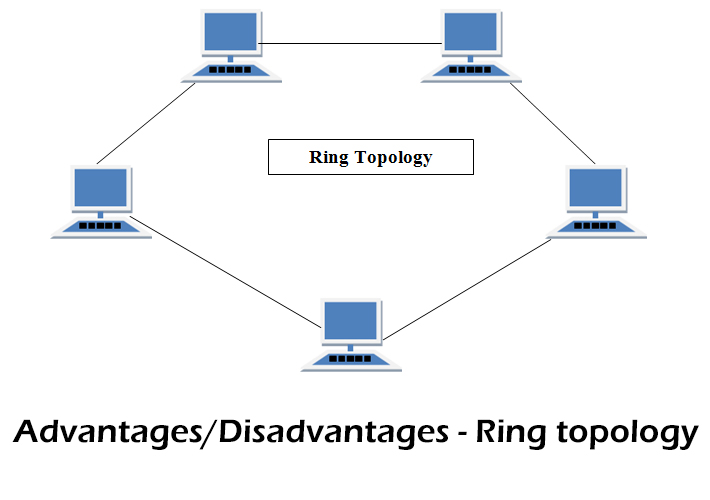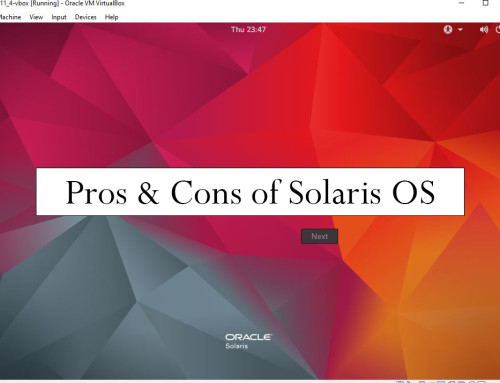What is ring topology:
A network topology in which every computer is connected to two computers one on each side. The computers are connected in such a way that it forms a ring shape. Data flows from source computer to destination computer bypassing from in between computers. The nodes (computers) are connected to form a closed path. The last computer is connected to the first computer making a closed path. The ring topology is shown in the diagram below.

The only computer with an empty token can send the data to the network. The token is passed to the whole network and the destination computer which matches the token address will receive the data. Suppose computer A wants to send data to computer C. So the first computer A waits for empty token. When computer A gets an empty token then it attaches the address of computer C and other data with the token. The token then passes to computer B. The token is checked by computer B and the address does not match so it passes the token to computer C. The address matches with computer C so the token is received and other data is also received and then the empty token is passed to the next computer.
Data from one computer to another computer passes in one direction or both direction. If data passes in a uni-directional way then it is known as half-duplex. In half-duplex only one computer can send or receives data at a time. If data passes in both direction in the ring network then it is known as full-duplex.
Some pros and cons of ring topology are explained below:-
Advantages of ring topology:
Some features of ring topology are:
Cost-effective:
There is no need for a server computer to make the network. All computers behave the same and have the same processing power. It is also easy to set up, install and expand computers in the network. Ring topology is economic as compared to a hybrid, mesh, and tree topology.
High speed:
The data flow clockwise or anticlockwise which mean it flows unidirectionally. If data flows in one direction then the speed of data transfer is high. Also, data is transferred in the form of data packets (tokens) so the speed of data is high.
No collision:
There is no collision of data. One computer with the empty token can transfer data in the network. So all computers have to wait to get a token. If a node gets a token then that computer can only transfer data making it collision-free.
Robust:
Many nodes can be connected to the network making it robust. Ring topology can support as many nodes as it can adjust.
Resource balance:
The network resources are equally distributed among the network. All computers are given token equally and all computers share the data and resources equally.
Repeaters:
The network can expand with more nodes with the help of repeaters and boosters. The repeaters can boost the data and data can travels in the long distance also.
Maintenance:
The maintenance of ring topology is easy as compared to bus topology. There is no need for an administrator computer to control the network. Troubleshooting in this network is also easy and cable damage can be easily noticed in the ring topology.
Disadvantages of ring topology:
Some drawbacks of ring topology are:
Adding/removing of nodes:
It is difficult to add/remove the node in ring topology because it will stop working on the network. As data flows from one computer to other so adding a new node can stop the network. Also removing any node will temporary stops the data flow in the network.
The token is required:
All nodes require a token to send/receive data. So all the computers have to wait for the empty token to reach them.
Slow than Ethernet:
Ring topology is slower in performance than Ethernet network. Ring network uses coaxial cable or RJ-45 cable which is slower than Ethernet cable.
Cable/node damage:
If cable damage then the whole network stops working. Also if any node disconnects due to any problem then the whole network cease.
Old technology:
Ring topology was the first time used to network IBM computers. Nowadays LAN become high speed and there is no need for ring topology and it is old now.
Performance:
A ring network is slower than bus topology. Ring topology is also difficult to scale. All computers have to be turned on to keep the network working.
Examples of ring topology:
- Network in Small buildings
- Network in schools
- Networking in offices
- SONET network
- SDH network




